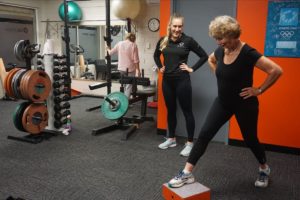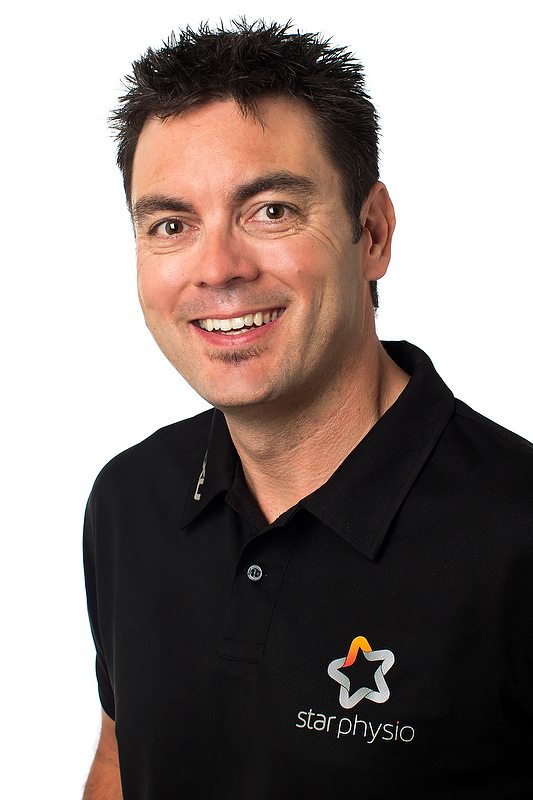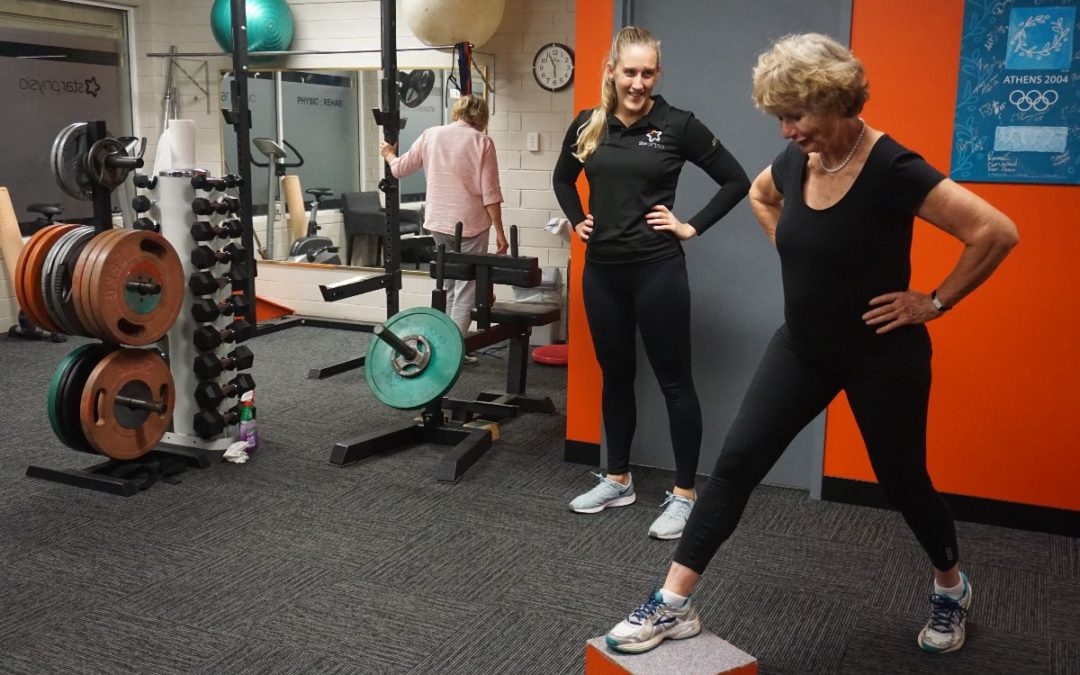Inability to balance one leg for 10 seconds linked to doubling in risk of death!
The inability to stand on one leg for 10 seconds over the age of 50 years is linked to a near doubling in the risk of death from any cause within the next 10 years, finds research published online in the British Journal of Sports Medicine.
Can you stand on one leg for 10 seconds? If not, read on below and book in with Star Physio today!
Unlike aerobic fitness and muscle strength and flexibility, balance tends to be reasonably well preserved until the sixth decade of life, when it starts to wane relatively rapidly, note the researchers.
Yet balance assessment isn’t routinely included in health checks of middle-aged and older men and women, possibly because there isn’t any standardised test for it, and there are few hard data linking it to clinical outcomes other than falls, they add.
The researchers therefore wanted to find out whether a balance test might be a reliable indicator of a person’s risk of death from any cause within the next decade, and, as such, might therefore merit inclusion in routine health checks in later life.
Balance Research
The researchers drew on participants in the CLINIMEX Exercise cohort study. This was set up in 1994 to assess associations between various measures of physical fitness, exercise- related variables, and conventional cardiovascular risk factors, with ill health and death.
The current analysis included 1702 participants aged 51–75 (average of 61) at their first check up, between February 2009 and December 2020. Around two thirds (68%) were men.
Weight and several measures of skinfold thickness plus waist size were taken. Details of medical history were also provided. Only those with stable gait were included.
Balance Test
As part of the check up, participants were asked to stand on one leg for 10 seconds without any additional support.
To improve standardisation of the test, participants were asked to place the front of the free foot on the back of the opposite lower leg, while keeping their arms by their sides and their gaze fixed straight ahead. Up to three attempts on either foot were permitted.
Poor balance findings!
In all, around 1 in 5 (20.5%; 348) participants failed to pass the test. The inability to do so rose in tandem with age, more or less doubling at subsequent 5 year intervals from the age of 51–55 onwards.
The proportions of those unable to stand on one leg for 10 seconds were: nearly 5% among 51–55 year olds; 8% among 56–60 year olds; just under 18% among 61–65 year olds; and just under 37% among 66–70 year olds.
More than half (around 54%) of those aged 71–75 were unable to complete the test. In other words, people in this age group were more than 11 times as likely to fail the test as those just 20 years younger.
Balance and risk of early death.
During an average monitoring period of 7 years, 123 (7%) people died: cancer (32%); cardiovascular disease (30%); respiratory disease (9%); and COVID-19 complications (7%).
In general, those who failed the test had poorer health: a higher proportion were obese, and/or had heart disease, high blood pressure, and unhealthy blood fat profiles. And type 2 diabetes was 3 times as common in this group: 38% vs around 13%.
After accounting for age, sex, and underlying conditions, an inability to stand unsupported on one leg for 10 seconds was associated with an 84% heightened risk of death from any cause within the next decade.
Nevertheless, the researchers conclude that the 10 second balance test “provides rapid and objective feedback for the patient and health professionals regarding static balance,” and that the test “adds useful information regarding mortality risk in middle-aged and older men and women.”
What can I do about it?
 The simple first step is to perform, or ask your physio or GP to test your ability to stand on 1 leg for 10 seconds. If you pass this test, according to this research you are half as likely to die in the next 10 years than if you fail!
The simple first step is to perform, or ask your physio or GP to test your ability to stand on 1 leg for 10 seconds. If you pass this test, according to this research you are half as likely to die in the next 10 years than if you fail!
Regardless of a pass or fail, this is great information to encourage all those over the age of 50 to keep moving. As mentioned above, good balance is a combination of fitness, strength, good body weight as well as for some more tricky balance mechanisms including the inner ear and cerebellum.
Star Physio can help you with all of the above including our fantastic GLA:D program which although designed with arthritis management front of mind, also includes balance and strength exercises in a small group class. You can book an initial consultation with one of our experts here to get you started on your journey today. It may even save your life!

Tara West Knows Best – Private Health Insurance is a MUST!!!
I’m going to have a little rant today, so bear with me… Private health insurance is an absolute necessity if you are playing volleyball - or any sport for that matter. In the past month, I have seen three patients requiring surgical intervention – all of whom...

Update from Damo’s trip to Europe!
Whirlwind trip thus far but it has been fun and educational to boot! I landed in Milan on Friday and had three days at the AIS European Training Centre on Lake Varese (terrible spot... not!!! ). I did a course/ conference with Paul Visentini (Australian and AIS...

Tara West knows Best – Lebron James’ Recovery Strategies
We are five games into the NBA playoffs (Warriors vs Cavaliers) and so far the Warriors are leading three games to two. With a number of injuries plaguing the Cavs in this finals series, super athlete Lebron James has a big task ahead of him. His best three teammates...

Tara West knows Best – Thoracic spine mobility in volleyball players
Thoracic spine mobility is really important for volleyball players. Poor thoracic mobility (specifically thoracic extension) has been shown to reduce performance in overhead athletes, and has been linked to shoulder pain. A flexed thoracic spine will affect your...

